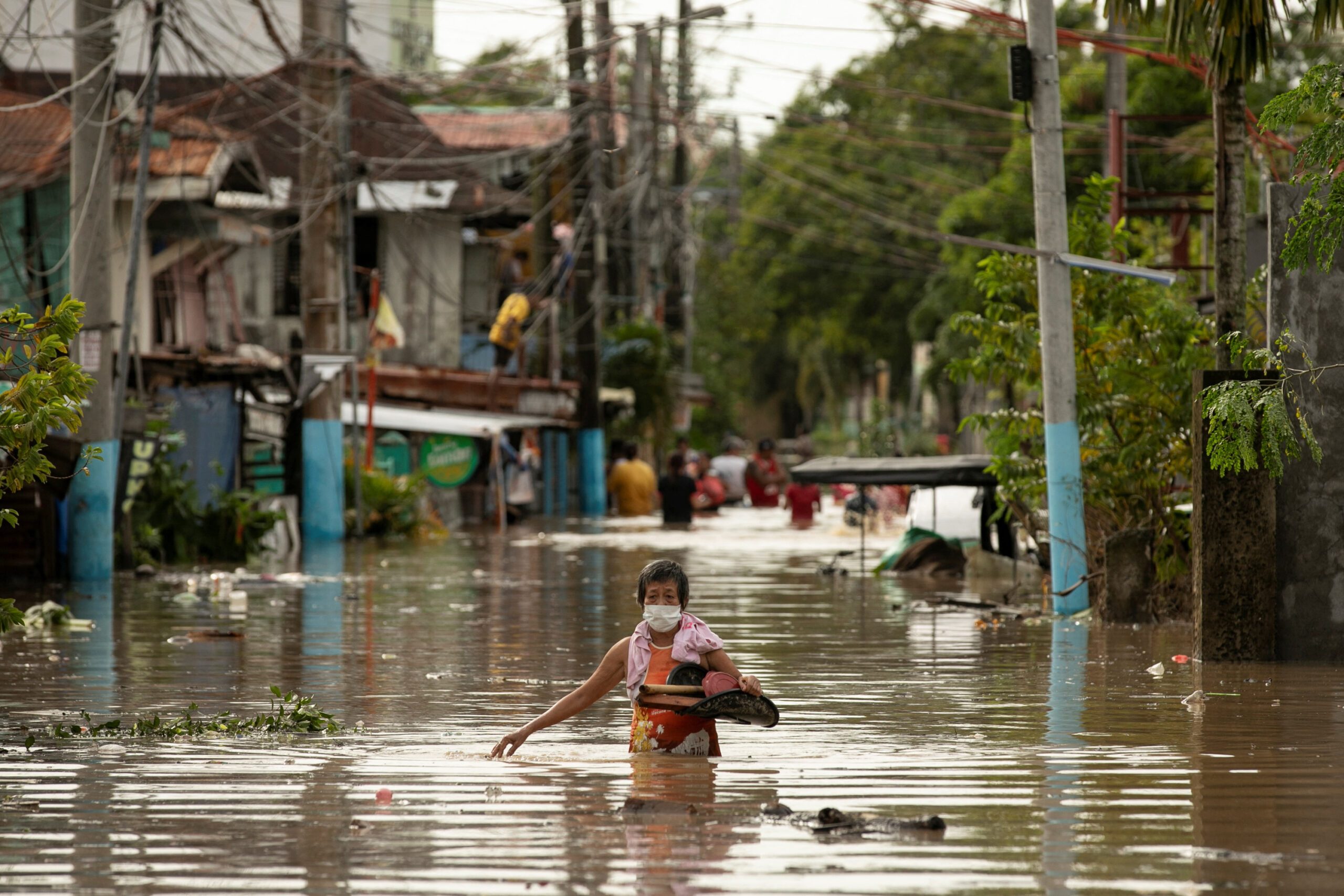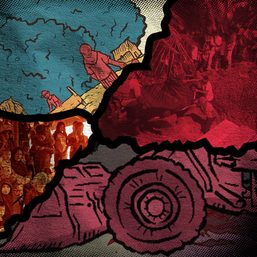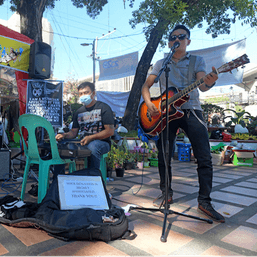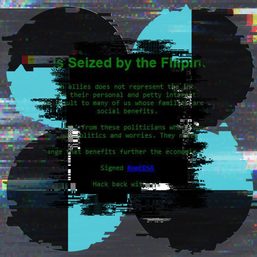SUMMARY
This is AI generated summarization, which may have errors. For context, always refer to the full article.

MANILA, Philippines – As climate changes, disasters are expected to worsen. Predicting weather, faster and more accurate, should give a fighting chance to battered nations like the Philippines.
The country is no stranger to disasters, averaging 20 tropical cyclones a year and having just recently marked a decade since the onslaught of Super Typhoon Yolanda I(Haiyan), one of the strongest tropical cyclones in recorded history.
At the brunt of disasters exacerbated by climate change, the Philippines could expect stronger storms in the years to come.
“It is proven that global temperatures are rising, and then nagbabago…ang mga climate pattern natin due to warming,” Nathaniel Servando, officer-in-charge of the Philippine Atmospheric, Geophysical and Astronomical Services Administration (PAGASA), told Rappler in an interview. (Climate patterns are changing due to warming.)
Anticipating extreme weather events in the future – like stronger tropical cyclones and droughts – the Philippines is now turning to artificial intelligence.
Last November 16, the Philippine government inked a memorandum of understanding ( MOU) with Atmo, an AI weather forecasting startup based in California. With the contract, the Philippines is set to obtain a high-resolution AI-powered weather forecasting system.
This is expected to augment PAGASA’s forecasting system which primarily uses conventional models.
Servando said that with the conventional numerical models they use, the runtime for making forecasts takes three hours and produces forecasts for only two days. The process can be cumbersome because it requires large computing resources that churn information on prevailing weather conditions.
With AI, Servando said they can already expect results within 15 minutes, providing a forecast for up to 14 days or two weeks. This is because the machine learning model utilizes historical weather data to produce the forecasts.
Faster forecasting means more time for local governments to prepare ahead of disasters.
“It will improve much better our early warning systems to manage impacts of meteorological hazards,” Servando said in a mix of English and Filipino. “And also for concerned sectors and decision-makers to prepare given a longer lead time.”
Globally, there is already a shifting perspective on weather and its impacts, Science Secretary Renato Solidum told Rappler.
“What will the weather do to the community?” Solidum echoed a fundamental question raised by an advocacy pushed by the World Meteorological Organization.
This is impact-based forecasting, which essentially means predicting the weather and its possible effects to communities. Will a weather event trigger landslides, floods? How high is the risk?
With this framework, Solidum said local governments will be able to “propose most appropriate actions.” In the Philippines, this could mean preemptive evacuation and deployment of resources.
Exacting predictions
But historical data does not only affect the speed of producing forecasts. Servando said that accuracy of predictions would depend on reliability on historical data fed into the system.
PAGASA will contribute more than 30 years’ worth of data into the new system. This will not only be limited to station data, but would include information from remote sensing, satellites, and network of radars.
“PAGASA for several years [has been] conducting observations, measuring different atmospheric parameters…like air pressure, temperature, wind, humidity,” said Servando.
“These are the parameters that are very important in coming up with forecasts, to predict the occurrence of heavy precipitation, typhoon tracks.”
Higher resolution also means more accurate predictions. Right now, PAGASA uses models with 3-kilometer resolution. The new AI-powered system will use 2-kilometer resolution.
What does this mean? Smaller grids show more details. Areas where rainfall will occur are better represented in forecasts. Predictions can be made more localized.
With finer resolution, said Servando, “we can better simulate more efficiently the rainfall forecast and where it will occur. Magiging more specific ang forecast.” (The forecast will be more specific.)
However, since AI-powered models utilize historical data, some experts have raised concerns on their reliability in an age when weather events are turning extreme and erratic. While faster, it will not replace conventional models anytime soon. But they can go hand-in-hand.
The MOU covers a two-year period. This would give time for PAGASA to learn the system, compare it with the conventional tools in its arsenal, and develop it for the country’s own application, said Servando.
Aside from faster weather forecasts, they will also be looking at how it could improve the meteorological services they provide the airline industry and the marine weather forecasts they give the shipping industry.
Farmers, said Servando, are particularly interested ahead of time how they can plan planting activities, especially at the onset of El Niño.
“At this time when there’s El Niño, some sectors are dependent,” said Servando in Filipino.
“It’s important that PAGASA provides crucial information for the water resources sector. But more importantly, for the general public, to ensure public safety.” (READ: Climate change extremes spur UN plan to fund weather forecasting)
Everything under the sun
Forecasts made at different scales could form an ecosystem of information that would support disaster response from small towns up to the national government.
In 2016, the Department of Science and Technology sought to develop the country’s extreme weather monitoring system. The initiative was a collaboration with Japan International Cooperation Agency, Japan Science and Technology, and Hokkaido University.
Called Ulat, the project aimed to make short-term weather forecasts by studying torrential rainfall and thunderstorm parameters.
Even data from Ulat can be used to feed the new AI system, said Solidum. The more data you have, the better the predictions and interpretations.
“Walang sayang na data,” said Solidum. (No data is wasted.)
While data from Ulat can contribute to the AI model, Solidum said it’s also good to have other sources to incite more confidence on forecasts.
“At some point, you also have to look at other data to forecast the weather independently,” he said.
Elsewhere, AI models are taking the forecasting field by storm.
Google DeepMind has launched GraphCast, said to deliver – using one’s desktop computer – 10-day weather predictions “at unprecedented accuracy in under one minute.”
The model claims to offer earlier warnings for extreme weather events and temperatures, more accurate cyclone tracks, having the invaluable potential to “save lives through greater preparedness.”
– Rappler.com
Add a comment
How does this make you feel?

![[OPINION] Bridging the gap between weather advisories and the public](https://www.rappler.com/tachyon/2020/11/iSpeak-science-for-the-people-November-7-2020.jpg?fit=449%2C449)

























There are no comments yet. Add your comment to start the conversation.